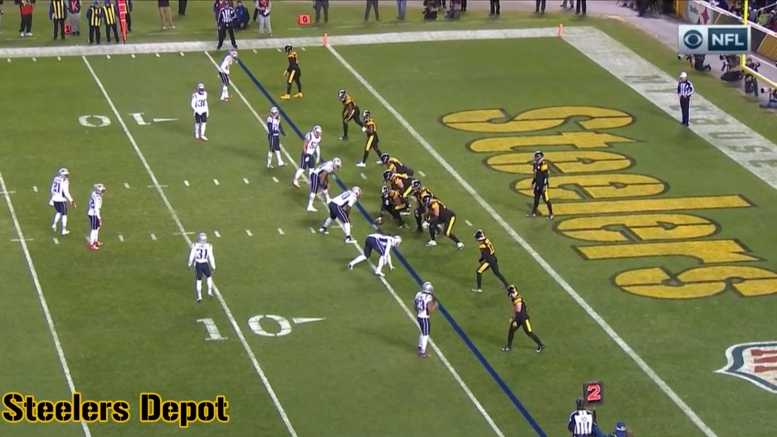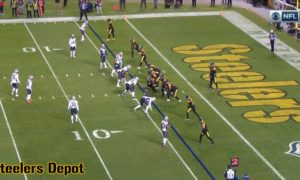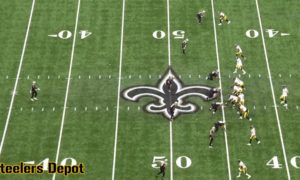You heard Ben Roethlisberger talk about it earlier this week. Offensive coordinator Randy Fichtner mentioned it as well. The Pittsburgh Steelers unleashed a five-receiver package on Sunday against the New England Patriots that was pretty much non-existent in the offense for many years.
Coinciding with the return of Eli Rogers, the Steelers ended up playing 17 of 64 snaps in that five-receiver set, though not all of them included every receiver at the line of scrimmage. I’ll be focusing on the empty sets in this article, however.
The second play on which it was featured ended up being a free play due to a defensive offside penalty. They got Brown into the inside slot on the right side here and Ben Roethlisberger looked for him over the top. The All-Pro got ahead of Stephon Gilmore with room to his left for the quarterback to throw into, but Roethlisberger couldn’t make the play.
The Steelers weren’t afraid to use it deep in their own end, either. On second and 14 from their own four, Roethlisberger found JuJu Smith-Schuster on a backshoulder throw for 22 yards to ignite the team’s second scoring drive of the game. He featured on the outside on this play.
In fact, this entire drive was run out of 00 personnel (that is, five wide receivers, no running backs or tight ends). On the next snap, Roethlisberger came back to Smith-Schuster for a nine-yard gain. He was on the opposite side of the field this time, and watch him come back to the ball. With this many one-on-one options, you’re almost bound to get one guy open eventually. That’s the strength of the package.
Arguably the biggest advantage of the five-receiver look is that it makes it that much easier to move Brown all over the field. Roethlisberger was able to hit him for a 17-yard touchdown once again from the inside slot position, he and James Washington crossing routes just after the snap to leverage the defender outside.
Of course it didn’t work on every play. interestingly enough, they never used it on third down. On 14 non-penalty snaps, they gained 93 yards for an average of 6.6 yards per play. As mentioned, several of those plays featured a receiver in the backfield, and included one carry (another negated by penalty).






